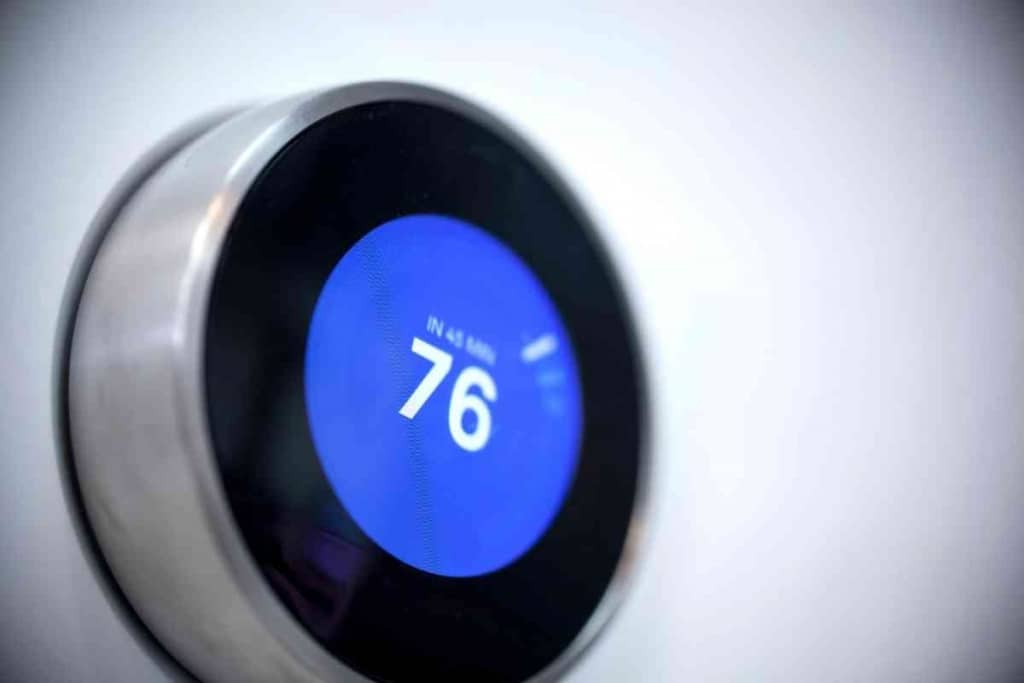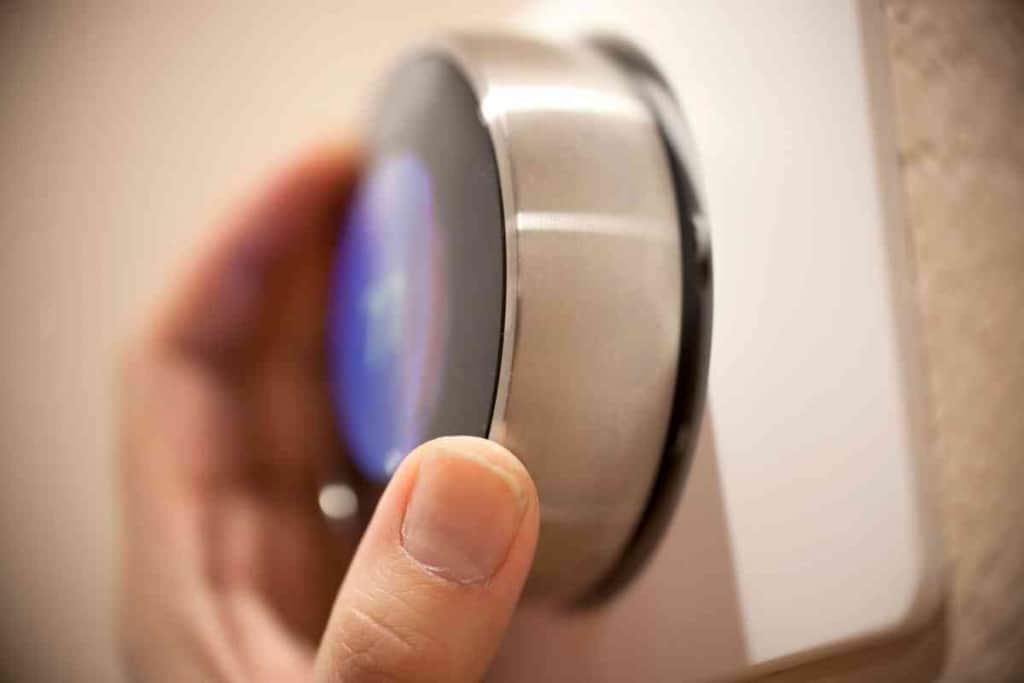Why Does My Nest Say Delayed? Nest Thermostat Answers!
A common question that is asked by people who own a Nest thermostat is why does my nest say delayed? This question can refer to a few different things, so we will try to cover all of the potential reasons in this article.

Table of Contents
Why Does My Nest Say Delayed?
Your Nest may say Delayed because it is still learning your routine and needs more time to get it right, that there is an issue with your HVAC system, or that there is something wrong with your Nest itself.
Keep reading for more information on what could be causing this error message.
- The far-field sensor needs to adjust to the new environment. When you first set up your Nest Thermostat, the far-field sensor needs time to adapt to the new environment so the Nest thermostat can learn your schedule. This process usually takes a few days.
- You haven’t set up a schedule yet. Nest Thermostats work best when you set up a schedule, so the thermostat can learn your temperature preferences and automatically adjust the temperature for you. If you haven’t set up a schedule yet, this may be why your Nest Thermostat is delayed in responding to your temperature changes.
- You’ve recently changed your Wi-Fi password. If you’ve recently changed your Wi-Fi password, you’ll need to update the password on your Nest Thermostat as well. To do this, go to the Nest app > Settings > Wi-Fi > Update password.
- There’s a problem with the Nest app or the Nest service. If you’re having trouble connecting to the Nest app or the Nest service, this could be why your Nest Thermostat is delayed in responding to your temperature changes. Check the Nest app or website for any updates or outage notifications.
- There’s a problem with your HVAC system. If there’s a problem with your furnace, air conditioner, or heat pump, this could be why your Nest Thermostat is delayed in responding to your temperature changes. Check your Nest app or website for any error messages or contact your HVAC professional for help.
Far-Field Sensor
The far-field sensor is an important part of the Nest Thermostat. It helps the thermostat to learn your schedule and adjust to the new environment.
This process usually takes a few days. The far-field sensor needs to be placed in a location where it can detect both you and your voice.
If you move the Nest Thermostat to a new location, the far-field sensor will need to be reset. You can do this by pressing the Home button on the Nest Thermostat. The far-field sensor will then start the adaptation process again.
Setting Up a Schedule
One of the features that make Nest Thermostats so popular is also one of the most often overlooked: the schedule function.
Nest Thermostats work best when you set up a schedule, so the thermostat can learn your temperature preferences and automatically adjust the temperature for you. If you haven’t set up a schedule yet, this may be why your Nest Thermostat is delayed in responding to your temperature changes.
The good news is, that setting up a schedule is quick and easy. Simply log into the Nest app and select the “Schedule” tab. From there, you can input your preferred temperatures for different times of day and days of the week.
Once you’ve saved your schedule, sit back and enjoy the convenience of a thermostat that knows just what temperature you want – no more fiddling with the dial!

Wifi
If you’ve recently changed your Wi-Fi password, you’ll need to update the password on your Nest Thermostat as well.
To do this, follow these steps: go to the Nest app > Settings > Wi-Fi > Update password. Once you’ve updated the password, your Nest Thermostat will be able to connect to the internet and you’ll be able to control it remotely.
If you have any questions or problems, please don’t hesitate to contact our support team. We’re here to help!
Nest Service Issues
If you’re having trouble connecting to the Nest app or website, this could be why your Nest Thermostat is delayed in responding to your temperature changes. Check the Nest app or website for any updates or outage notifications.
If there are no updates or notifications, try restarting your router and modem. If you’re still having trouble, contact your ISP for help.
HVAC System Problems
If you’ve been noticing that your Nest Thermostat is slow to respond to temperature changes, it could be due to an issue with your HVAC system. Before you contact Nest support, take a moment to check your furnace, air conditioner, or heat pump for any problems.
If there is a problem with your HVAC system, this could be why your Nest Thermostat is delayed in responding. In some cases, you may be able to resolve the issue yourself by checking for error messages in the Nest app or on the Nest website.
If you’re not sure how to troubleshoot the issue, or if the problem persists, we recommend contacting a professional HVAC technician for help.
Contacting an HVAC Professional
If you find that your heating furnace or air conditioning system is not working properly, it is important to reach out to a professional for help.
A professional will be able to diagnose the problem and get your Nest Smart Thermostat up and running again. In addition, a professional can also provide you with tips on how to prevent future problems with your heating furnace or air conditioning system.
By reaching out to a professional, you can ensure that your home is comfortable and safe all year round.
Why Choose a Smart Thermostat?
A thermostat is a device that controls the temperature of a space, such as a room or an entire house. Thermostats can be either manual or automatic.
Manual thermostats must be turned on and off manually, while automatic thermostats can be set to turn on and off at certain times of day or night. Smart thermostats are a type of automatic thermostat that can be controlled remotely via an app on a smartphone or tablet.
One of the benefits of using a smart thermostat is that it can help you save money on your energy bill. Smart thermostats automatically adjust the temperature based on whether someone is home or not. For example, if you typically leave for work at 8:00 am and return at 6:00 pm, a smart thermostat will automatically lower the temperature when you leave and raise it again when you come home.
This can help to reduce energy waste and lower your overall energy costs. In addition, some smart thermostats allow you to set different temperature profiles for different times of day, so you can have the temperature turned down when you’re sleeping or away from home during the day.
Overall, choosing a smart thermostat can help you save money by reducing energy waste and allowing you to better control the temperature in your home.